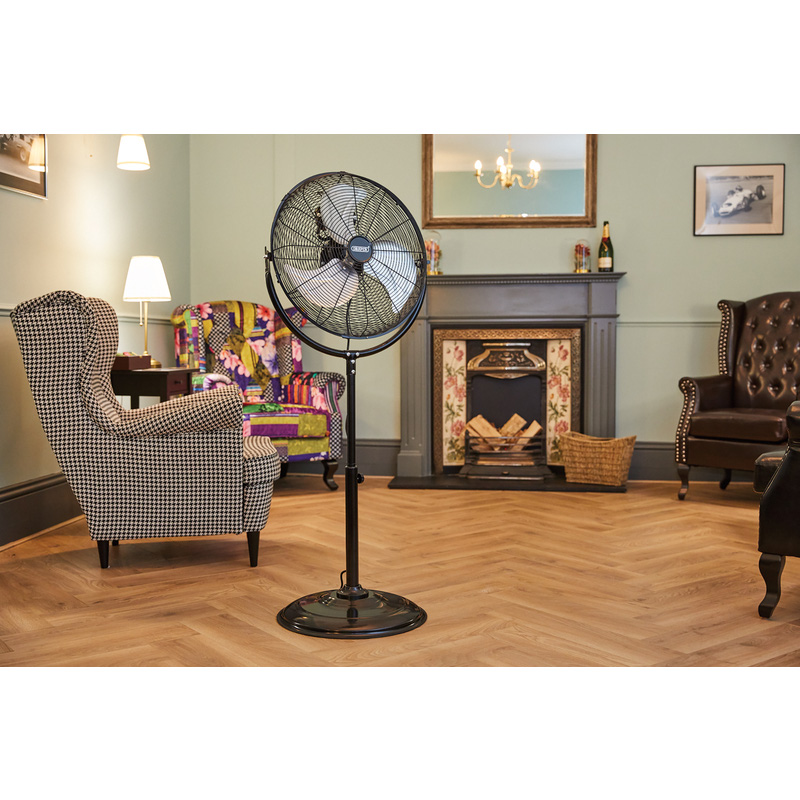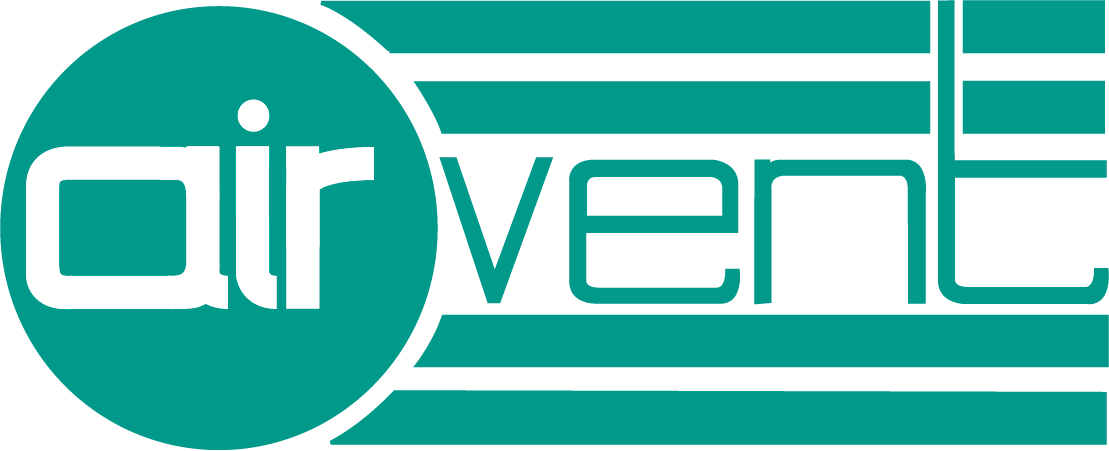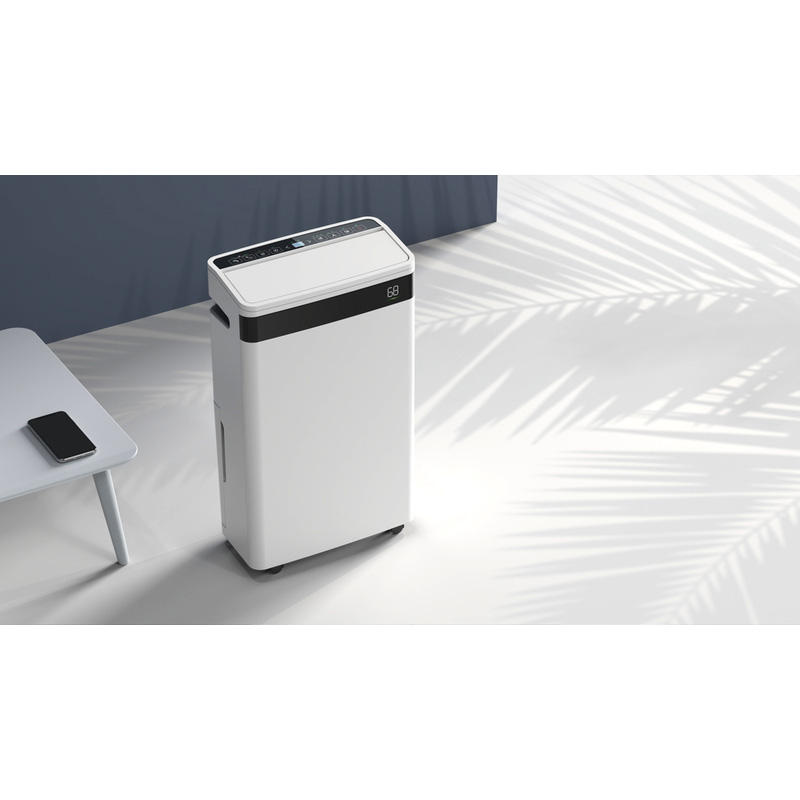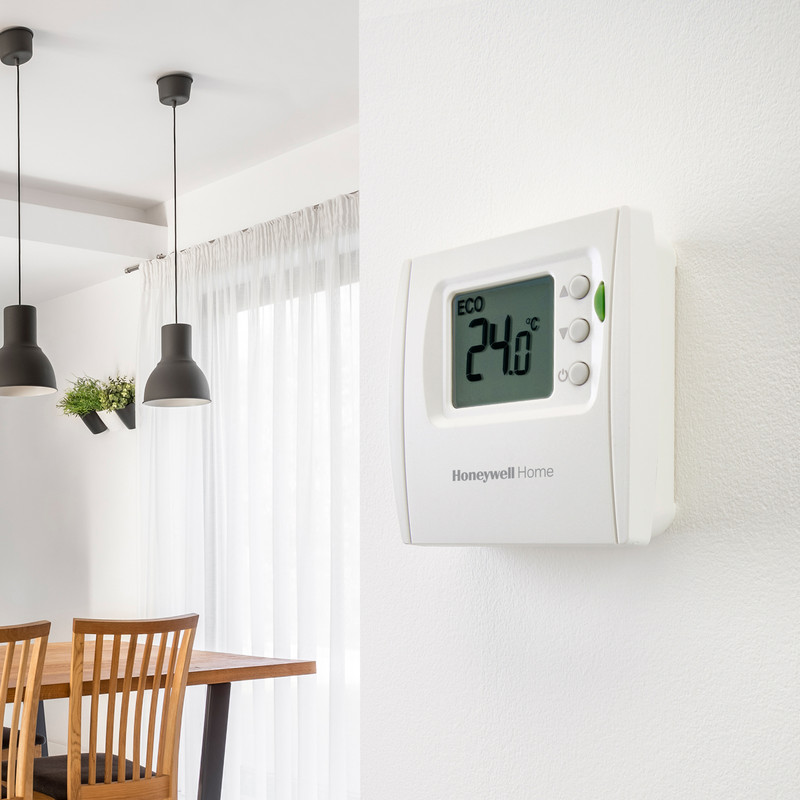When it comes to staying cool or keeping the air flowing, fans are a go-to solution for just about everyone. But with so many different types of fans available – such as desk fans, tower fans, and ceiling fans – it can be tricky to figure out which one is right for you.
In this guide, we’ll break down the most common fan types, what makes each one unique, and where they work best. Whether you're looking to cool a small room or just need a breeze while you work, there's a fan out there that's perfect for your needs.
Types of Cooling Fans
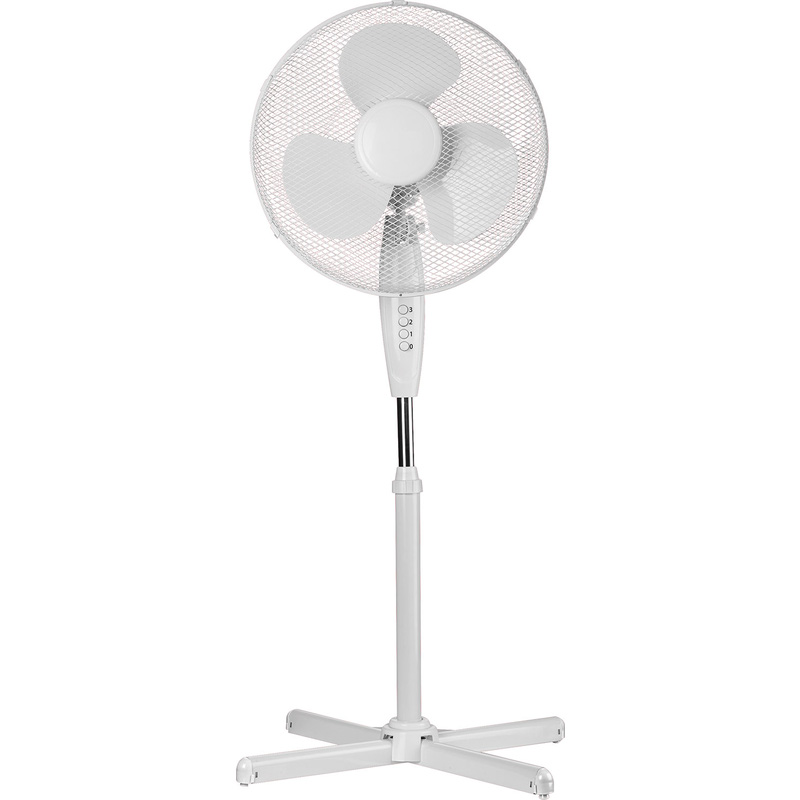
Pedestal Fan
Pedestal fans are a highly popular type of freestanding cooling solution. Their key advantage is portability, allowing you to easily move them between rooms – a distinct benefit compared to fixed installations such as ceiling fans. This makes them a versatile option suitable for both homes and offices. Many models also feature adjustable heights, providing flexibility in directing airflow exactly where you want it. While highly practical, their aesthetics might not appeal to everyone, especially when compared to more design-focused fans.
Compared to tower fans, pedestal fans are generally taller and often more budget-friendly. However, they also tend to be noisier in operation and take up a larger footprint. A potential downside is their risk of tipping over, and some units can be prone to wobbling, especially if accidentally knocked. Despite these considerations, their effectiveness and adaptability make them a staple in many settings.
Advantages
-
Portable, making them easy to move around
-
Some models feature height adjustment
Things to Consider
-
Can be noisy
-
May be prone to wobbling and tipping over
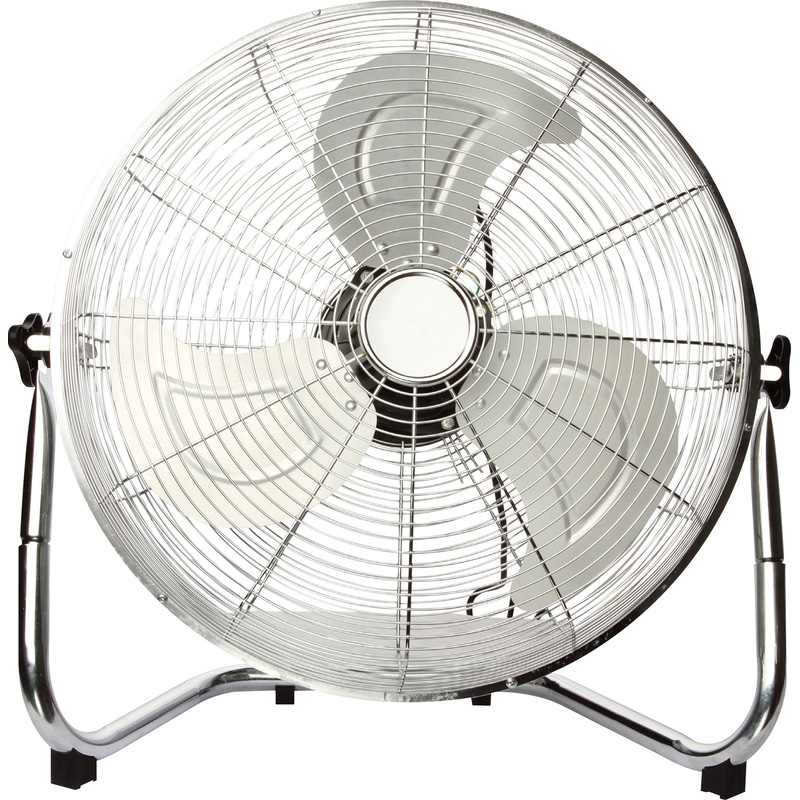
Floor Fan
Floor fans, which may also feature oscillating blades like many pedestal fans, are uniquely designed to sit low to the ground. They're typically engineered to be more powerful than standard household fans, making them an excellent solution for effectively circulating air in very large indoor areas such as workshops and garages. Their robust performance also extends to some covered outdoor environments, such as patios, where substantial and consistent airflow is beneficial.
A key characteristic is their very strong airflow. Some heavy-duty models offer significant power outputs (including up to 230 V) to handle demanding ventilation needs. Their low-profile design contributes to greater stability when compared to taller units like pedestal or tower fans, reducing the risk of them being knocked over. What's more, they're often more durable in respect of construction, frequently using metal components instead of plastic This enhances their longevity, especially in more industrial type settings.
Advantages
-
Good stability
-
Powerful airflow for larger spaces
Things to Consider
-
Airflow only at floor level
-
May be too powerful for small spaces
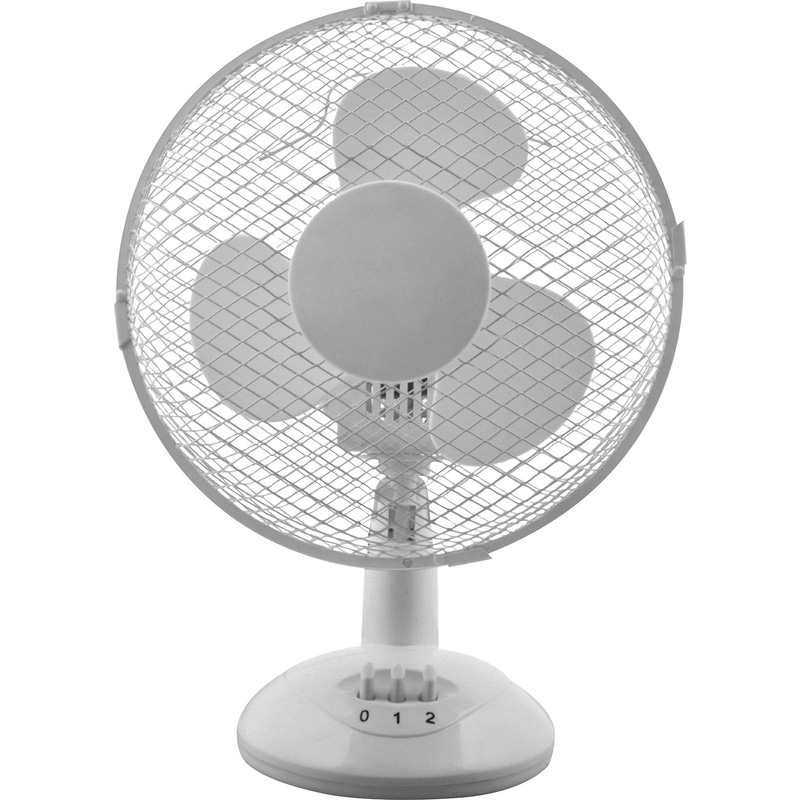
Desk Fan
Designed for personal cooling in compact areas, desk fans, also known as tabletop fans, offer similar functionality to pedestal fans but in a much more confined space. They're ideal for placing on desks, nightstands, or small tables to provide a gentle, localised breeze. Due to their smaller size and limited power, they're best suited for cooling smaller rooms and workspaces, and operate more quietly compared to larger fan types, making them less intrusive.
These compact fans are typically less powerful (with outputs sometimes in the 25 V to 45 V range), reflecting their design for close-proximity use rather than whole-room circulation. Consequently, they're not as effective for large spaces. Material and cost can also vary. While many budget-friendly models are constructed from plastic, more stylish chrome varieties tend to carry a higher price tag. It's worth noting that prolonged close use is that direct airflow may sometimes lead to eye dryness for some people.
Advantages
-
Compact and space-saving
-
Quieter operation
Things to Consider
-
Not suited for large spaces
-
Can cause eye dryness
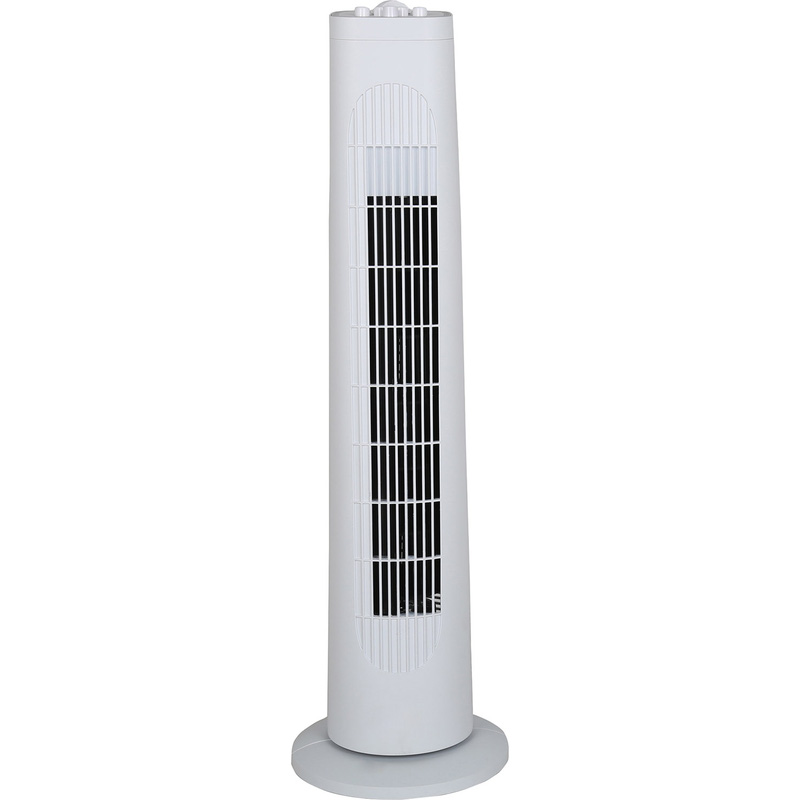
Tower Fan
Tower fans are noted by their sleek, modern aesthetic and tall, slim profile, making them an great choice for contemporary interiors. They're particularly well-suited for smaller spaces, including tight corners where other fans might not easily fit. They're usually much quieter in operation compared to traditional bladed fans, contributing to a more peaceful environment. For added convenience, many models offer remote control functionality, so you can easily make adjustments from a distance.
Internally, tower fans operate differently from pedestal fans; instead of large, visible spinning blades, they typically use a rotating impeller housed within the unit, and the entire structure often oscillates to distribute the air. This mechanism tends to produce a gentler airflow. These characteristics make tower fans particularly well-suited for bedrooms and living areas, where a gentler breeze and minimal operational noise are often preferred over sheer power.
Advantages
-
Sleek, compact design
-
Gentle airflow
Things to Consider
-
Not as powerful
-
Don't usually have tilt adjusts to direct airflow
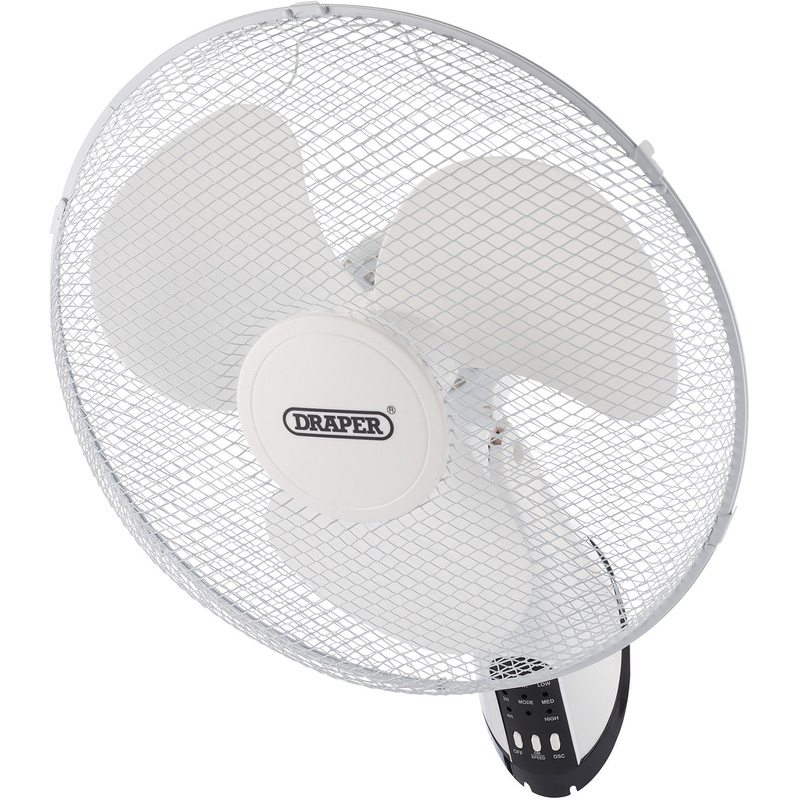
Wall Mounted Fan
Wall-mounted fans are a fixed cooling solution, requiring secure installation onto a wall. This means they are not portable and will remain in one designated spot, but this design offers a significant advantage in terms of saving valuable floor space, making them an excellent choice for rooms where space is at a premium. They are ideal for providing consistent airflow to a specific localised area, such as above a desk or in a small workshop. An added benefit of their elevated, fixed position is increased safety, as they are kept out of the reach of pets and small children, unlike floor-standing alternatives like pedestal fans.
Many wall-mounted fans come equipped with an oscillating feature, allowing them to rotate and distribute air across a wider section of the room. Given their typical placement, which can be higher up on a wall, most models are conveniently operated via a remote control. While effective for personal cooling or smaller zones, they are generally not as effective as other types of fans when it comes to cooling larger rooms thoroughly. Consideration should also be given to maintenance, as their mounted position can make them more difficult to clean and access compared to portable fans.
Advantages
-
Space saving
-
Enhanced safety
Things to Consider
-
Not portable
-
More difficult to clean and maintain
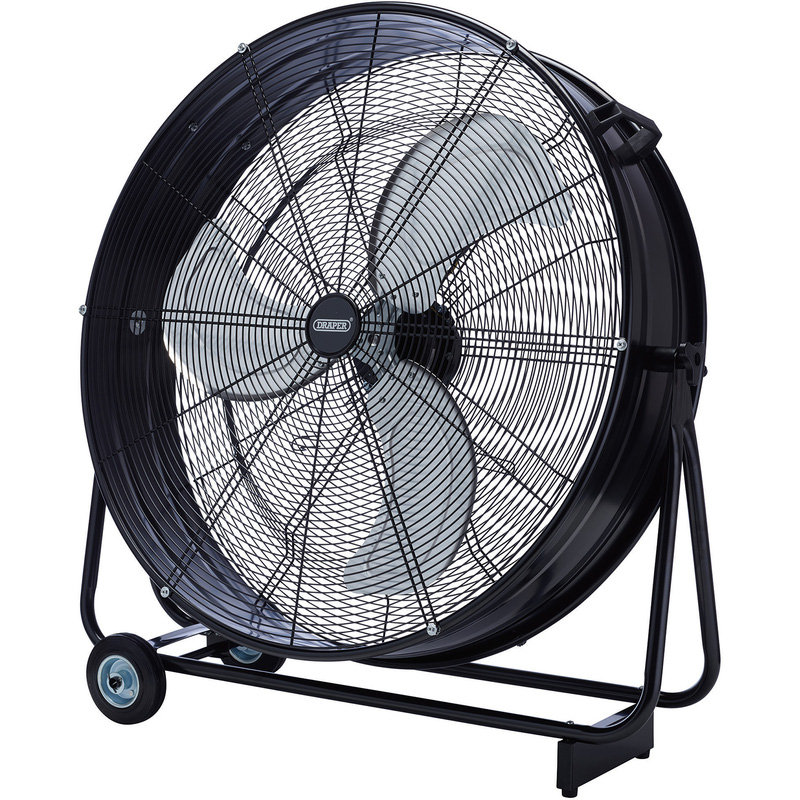
Drum Fan
Drum fans, often referred to as barrel fans, are industrial-grade units specifically designed for more demanding environments like large factories and workshops. They're significantly more powerful than standard fans, featuring a durable construction (usually from metal) to withstand tougher conditions. Despite their robust build and large size, they're designed to be portable, often featuring wheels for easier manoeuvrability around a large workspace.
The primary advantage of these fans is their high-velocity airflow and substantial power output, enabling them to cool down large spaces very quickly, with most models offering variable speed settings. However, they're generally more expensive to purchase than other types of fans, and their larger size means they typically take up more floor space. What's more, they can be very noisy in operation, making them unsuitable for home or office environments where quieter conditions are preferred.
Advantages
-
Powerful and rapid cooling
-
Durable for industrial use
Things to Consider
-
More expensive
-
Can be very noisy
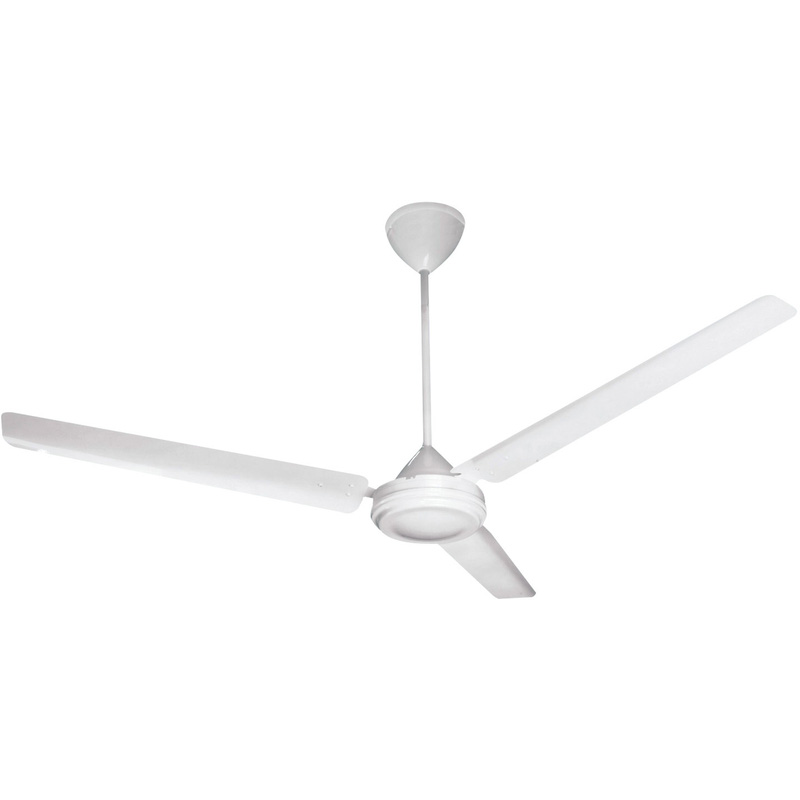
Ceiling Fan
Ceiling fans are a more permanent type of fixture and often found in home living spaces. A key advantage is that they don't take up any valuable floor space, making them an unobtrusive option. They're known for their quiet operation, which makes them particularly well-suited for installation in bedrooms where minimal noise is essential. However, being a fixture, they are not portable and require electrical installation, which should ideally be carried out by a qualified electrician.
These fans generally provide a wider airflow reach, effectively helping to regulate temperatures, making them ideal for smaller to medium-sized rooms. Control is usually managed via a dedicated wall-mounted switch, similar in appearance and operation to a light switch. While they offer distinct benefits, ceiling fans are generally more expensive than freestanding alternatives and may not suitable for rooms with low ceilings for safety reasons. Furthermore, their overhead location can make them more difficult to clean compared to easily accessible portable fans.
Advantages
-
Space-saving and quiet operation
-
Wider airflow outreach
Things to Consider
-
Not portable and requires installation
-
Limitations with low ceilings
Things to Consider Before Buying a Fan
Room Size & Air Circulation
Consider the size of the space you want to cool. Ceiling fans are a great choice for larger or open-plan areas where strong, consistent airflow is needed. For medium-sized rooms, pedestal fans can be very effective, while tower fans are well-suited to smaller spaces where a more compact, gentle breeze is preferred.
Portability
Think about whether you’ll need to move the fan between rooms. If portability is important, a pedestal or tower fan is ideal as both styles are easy to reposition. Ceiling fans, on the other hand, are fixed in place and better suited where you'd prefer a permanent setup.
Noise Level
For bedrooms, home offices, or any space where noise is a concern, quieter options like ceiling fans or modern tower fans are worth considering. Pedestal fans can be a bit louder, especially at higher speeds, which might be less suitable for quiet settings.
Cooling Power / Airflow
Different fan types offer varying levels of airflow. If you need strong, direct cooling, a pedestal or ceiling fan may be the best option. For more even, gentle airflow, especially in smaller rooms, a tower fan can provide comfortable cooling without being overpowering.
Aesthetics & Space
If aesthetics and space are important, ceiling fans can be stylish and space-saving since they’re mounted overhead. Pedestal fans are bulkier and more visible, while tower fans have a slim, modern design that can fit neatly into tight corners.
Features
Consider what extra features might be useful for your needs. Many pedestal and tower fans come with remote controls, timers, and settings like sleep or eco mode.
Installation & Maintenance
Ease of setup and cleaning can also influence your choice. Ceiling fans require installation and take a bit more effort when it comes to cleaning, making them better for long-term use in a fixed location. Pedestal and tower fans are typically easy to assemble, maintain, and store away when not in use.

